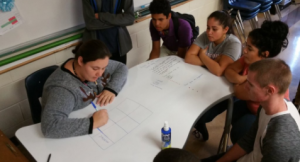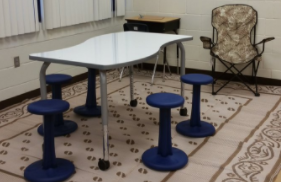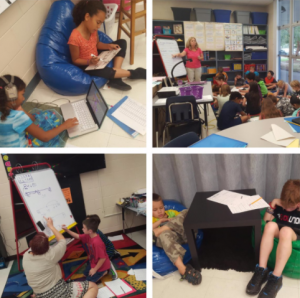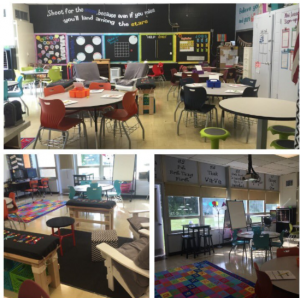The term “form follows function” derives from an article by American architect Louis Sullivan entitled The Tall Office Building Artistically Considered. To summarize the meaning:
Whether it be the sweeping eagle in his flight, or the open apple-blossom, the toiling work-horse, the blithe swan, the branching oak, the winding stream at its base, the drifting clouds, over all the coursing sun, form ever follows function, and this is the law. Where function does not change, form does not change. The granite rocks, the ever-brooding hills, remain for ages; the lightning lives, comes into shape, and dies, in a twinkling.
It is the pervading law of all things organic and inorganic, of all things physical and metaphysical, of all things human and all things superhuman, of all true manifestations of the head, of the heart, of the soul, that the life is recognizable in its expression, that form ever follows function. This is the law.
The influence of the factory-model of efficiency had a profound impact on schooling, in spite of the fact that churning out products has little to do with nurturing thinking. Classrooms today still resemble the factory approach of individual seats set in rows, though in recent decades schools have worked to modify that by clustering desks or placing them in a circle. What must happen, however, is that schools need to rethink the function of schooling and outfit classrooms accordingly.
In a Learner-Active, Technology-Infused Classroom, students engage in learning in a social environment, as collaborators as well as individual content masters. Students are actively engaged in a variety of activities throughout the day; and while short, whole-group lessons are a part of the day, they are nowhere near the bulk of the day. Therefore, the form of the classroom should address the various functions related to student work. Students can then move seats and sit in a variety of areas for the whole-group lesson. Here are a few considerations for furniture purchases:
1.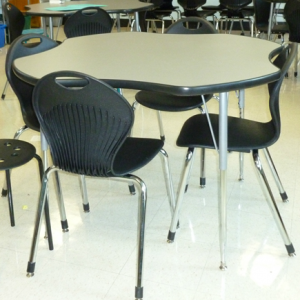 To create a culture of collaboration, ensure an unbroken surface among collaborators. Round tables ensure that equals sit around a table with an unbroken surface, thus not designating any area as belong to any member, and not having any member at the head of a table. I recommend 42″ tables for most four-person collaborations as it allows for discussion with lower voices than the more common 48″ tables. A clover table is a great “hybrid” — students sit at the indent, 42″ apart, while surrounded by a little more table space with a 48″ diameter at the longest side.
To create a culture of collaboration, ensure an unbroken surface among collaborators. Round tables ensure that equals sit around a table with an unbroken surface, thus not designating any area as belong to any member, and not having any member at the head of a table. I recommend 42″ tables for most four-person collaborations as it allows for discussion with lower voices than the more common 48″ tables. A clover table is a great “hybrid” — students sit at the indent, 42″ apart, while surrounded by a little more table space with a 48″ diameter at the longest side.
2.  For pairs discussions, and for speaking activities in a world language classroom, use smaller, 32″ café tables. A smaller table allows two students to converse with one another without adding to the overall noise level of the classroom. It provides a form that follows the function of a one-on-one conversation.
For pairs discussions, and for speaking activities in a world language classroom, use smaller, 32″ café tables. A smaller table allows two students to converse with one another without adding to the overall noise level of the classroom. It provides a form that follows the function of a one-on-one conversation.
3. Cons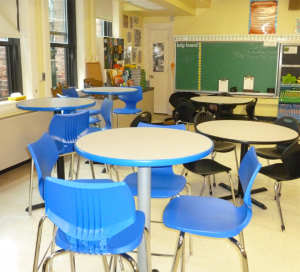 ider high-top tables, particularly in middle schools. Students who are experiencing growth spurts and hormonal changes often need to move around and shift position during the class period. A high-top table allows students to continue to engage in learning whether they choose to stand or sit. While working, you’ll see students stand, sit, and stand again without interrupting the conversation.
ider high-top tables, particularly in middle schools. Students who are experiencing growth spurts and hormonal changes often need to move around and shift position during the class period. A high-top table allows students to continue to engage in learning whether they choose to stand or sit. While working, you’ll see students stand, sit, and stand again without interrupting the conversation.
4. For individual work, consider using some individual desks, perhaps placed in an area of the room away from the collaborative areas. Standing desks can be useful as well; a recent Forbes article pointed out the value of standing desks for energizing the brain.
5. 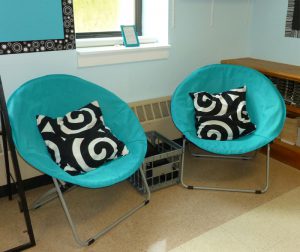 For small-group discussions of, for example, the current problem students are trying to solve, consider soft seating such as couches and comfy chairs so students are engaging in what feels more like a living room. Students can sign up to reserve the discourse center for their group work.
For small-group discussions of, for example, the current problem students are trying to solve, consider soft seating such as couches and comfy chairs so students are engaging in what feels more like a living room. Students can sign up to reserve the discourse center for their group work.
6. Tea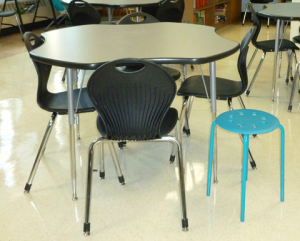 cher facilitation is an important part of the learning experience, and, while students are working, teachers should be moving around from table to table, area to area, to partner with them in the learning process. While facilitating, teachers should sit with students (or stand alongside them) rather than hover over them. To accommodate this activity, a stool makes a great seating option for the teacher. Teachers can carry around a lightweight stool or have several set up around the room.
cher facilitation is an important part of the learning experience, and, while students are working, teachers should be moving around from table to table, area to area, to partner with them in the learning process. While facilitating, teachers should sit with students (or stand alongside them) rather than hover over them. To accommodate this activity, a stool makes a great seating option for the teacher. Teachers can carry around a lightweight stool or have several set up around the room.
7. For conferences, small-group mini-lessons, and book discussions, you might want to use a rectangular table, allowing for a more formal environment with, perhaps, a group leader.
These are a few ideas for furniture that fits within the generally accepted ideas for classroom furniture. However, more and more school furniture companies today are developing unique options for various activities. Just consider the function, and find the appropriate form to match that function!
Here are some “tweeted” options from our client Learner-Active, Technology-Infused Classrooms (click on the image for the full tweet):
Desks with writeable surfaces
A variety of areas in third grade
Student-created areas
And more . . .

